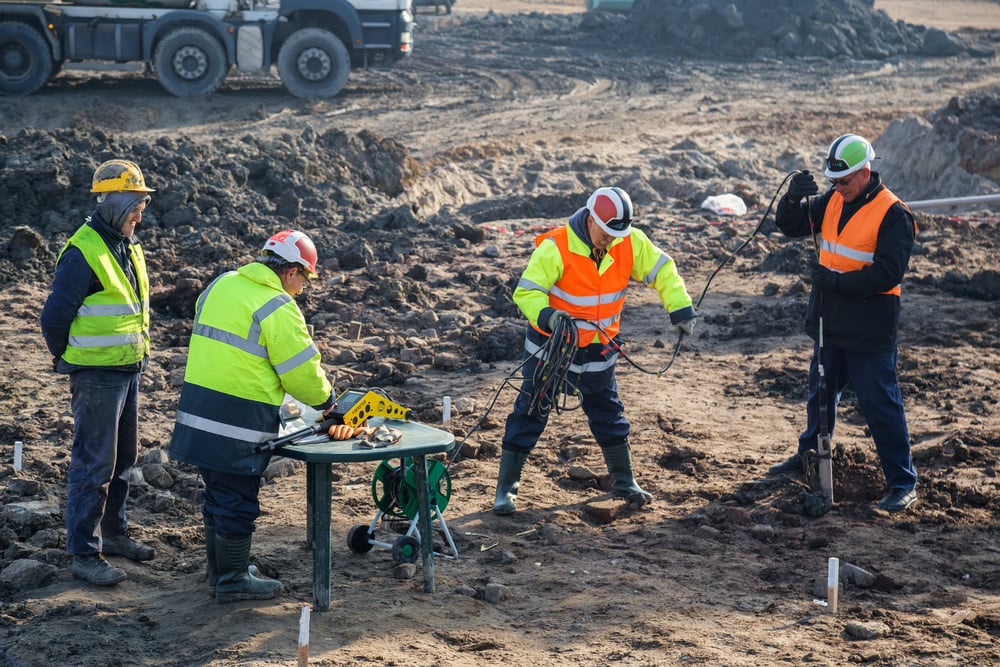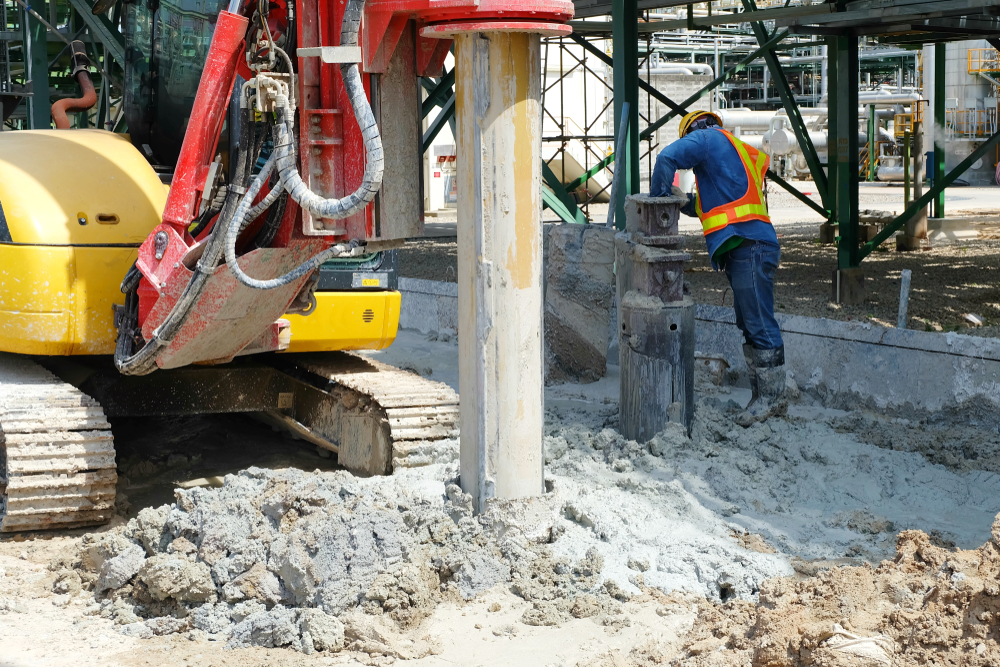Not known Facts About Geotechnical Engineering For Construction Projects
Some Known Facts About Geotechnical Engineering For Construction Projects.
Table of ContentsThe Best Strategy To Use For Geotechnical Engineering For Construction ProjectsGeotechnical Engineering For Construction Projects for BeginnersGeotechnical Engineering For Construction Projects for BeginnersWhat Does Geotechnical Engineering For Construction Projects Mean?Geotechnical Engineering For Construction Projects Can Be Fun For Anyone
For that reason, throughout the examination, it is very important to pierce at the called for depth and the needed number of holes according to the suggestion of the Canadian Foundation Layout requirement. Often, the owner may save some Geotechnical Examination price but finish up spending greater than the anticipated during the building price.The obligations of the geotechnical professional entail providing material testing for building and construction assistance. Geotechnical Engineering for Construction Projects. Geotechnical engineers analyse all the field examination records to make sure that construction is taking place based on the task requirements. Throughout building and construction, a confirmatory test for soil compaction is done on-site to guarantee that no future negotiation occurs
After the concrete is put -7 days and 28 days- examinations are conducted on concrete examples accumulated from the website to ensure that the concrete put meets the design requirement. Asphalt core is taken after the Asphalt is laid and compacted to validate that it fulfills the design requirement. All lab examination records are analysed by the Geotechnical Engineer to make sure that it meets the project requirements.
Our Geotechnical Engineering For Construction Projects Statements

Geotechnical design plays an important function in ensuring the stability of building tasks. Geotechnical engineering is an essential branch of civil design that concentrates on comprehending the behaviour of planet products, such as soil and rock.

For a reliable foundation and a smooth building process, depend provide the proficiency you need. Call to get expert guidance and geotechnical services tailored to your following job.
The smart Trick of Geotechnical Engineering For Construction Projects That Nobody is Talking About
When embarking on a land development task, recognizing the ground below your feet is as critical as the structures you intend to construct above it. Our Geotechnical Engineering team evaluate the ground, ensuring it is appropriate for the proposed development while giving you with the info called for to satisfy your job objectives.
Geotechnical Engineering takes a look at the development of the ground, as it is the foundation for all projects. Where frameworks need to be created with respect to the ground problems; ground conditions (e.g., soft ground) may need reinforcing depending upon the size of the designated structure. Before building, you need to learn about the groundwater, dirt framework, and liquefaction chance of your land.
For websites that are not linked on the local authority infrastructure additional site examinations would certainly be needed to give technical inputs for on-site stormwater and wastewater. We have actually experienced Geotechnical Designers based in each workplace, sustaining your geotechnical requirements nationwide. Connect to us to go over how we can sustain your next project.
These records are customized to meet the particular requirements of a project and consist of layout specifications and recommendations for the building and construction of a variety of manufactured frameworks. In addition to providing consultancy solutions covering areas such as slope security and load-bearing abilities for different products, these engineers embark on r & d tasks to boost techniques, devices, products knowledge and evaluation covering entire lifecycles.
The 20-Second Trick For Geotechnical Engineering For Construction Projects

Prices of pay normally increase as your expertise and abilities grow, with standards pointing to a graduate starting salary of in between 18,000 and 28,000 per year in the UK. This increases to 26,000 to 36,000 with a couple of years of experience and after that getting to 40,000 to 60,000+ for senior, legal or master engineers.
However, additional reading with the ideal application it is possible to master the occupation and gain entry to a challenging yet fulfilling and crucial job. A rock hound would require to re-train to come to be a geotechnical designer, although there is a lot of cross-over in between both occupations, which could make this much easier - Geotechnical Engineering for Construction Projects. Geologists need to have an understanding of dirts, rocks and other products from a scientific viewpoint, while geotechnical engineers story their expertise of issues such as dirt and rock technician, geophysics and hydrology and use them to engineering and environmental tasks
When beginning out, these engineers will certainly tend to work on less intricate tasks, accumulating knowledge and experience prepared for more tough work later on. Geotechnical designers have a tendency to be experts in details areas as they expand in experience, concentrating on particular facilities such as trains, roadways or water. These engineers additionally work with renewable resource, offshore and onshore oil and gas, nuclear power, and more.
Our Geotechnical Engineering For Construction Projects Ideas
The time taken to end up being a geotechnical designer depends on where you are based, where you study and what level of education and learning you desire dig this to achieve prior to getting in the work environment. Generally-speaking it takes 3-4 years to reach the fundamental needs to start an occupation as a geotechnical designer.
These procedures allow professionals to examine a host of dirt mechanics including weight, porosity, void-to-solid bit proportion, leaks in the structure, compressibility, maximum shear toughness, birthing capacity and contortions. If the framework calls for a deep structure, designers will certainly use a cone penetration examination to estimate the amount of skin and end bearing resistance in the subsurface.
When analyzing an incline's equilibrium of shear anxiety and shear stamina, or its capability to withstand and undertake activity, rotational slides and translational slides are commonly considered. Rotational slides fail along a bent surface, with translational slides occurring on a planar surface. A specialist's goal is to determine the problems at which a slope failing could occur.
Frequently, findings recommend that a site's soil must be treated to improve its shear strength, rigidity and leaks in the structure before design and building and construction. When it comes time to outline foundation plans, experts are significantly focused on sustainability, even more specifically how to reduce a foundation's carbon impact. One strategy has actually been to replace 20 percent of a structure's cement with fly ash, a waste item from coal fire power plants.